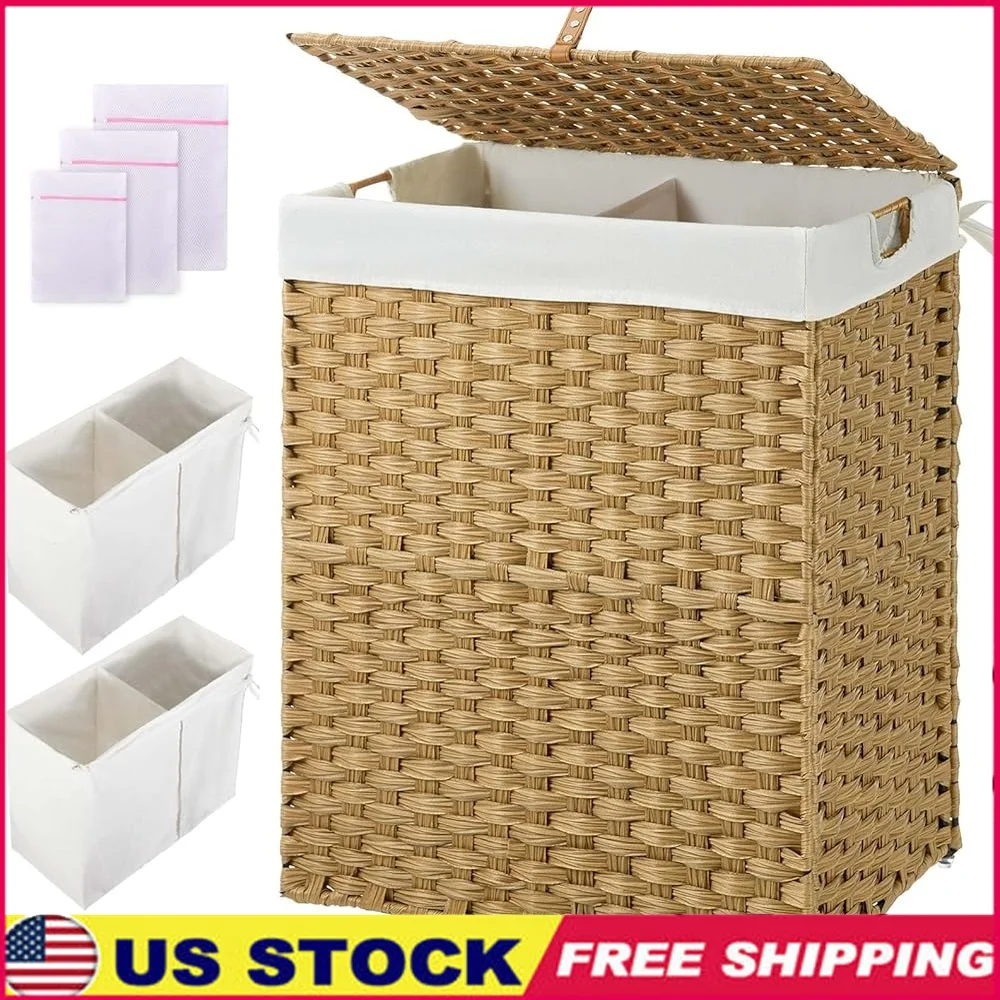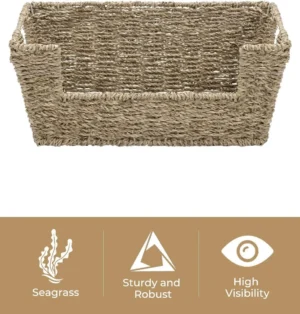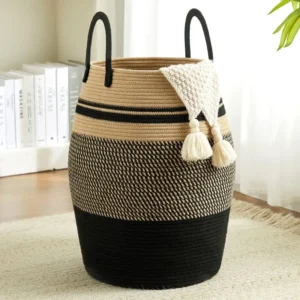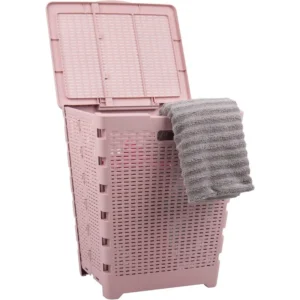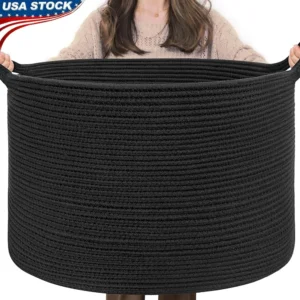Choosing the right laundry basket might seem like a small decision, but considering the average household handles laundry over 200 times per year, it’s a choice worth contemplating. Laundry baskets aren’t just functional necessities—they’re visible elements in our homes that can either enhance or detract from our carefully curated spaces. Among the most popular options, woven and wicker baskets stand out for their perfect blend of practicality and style.
Many shoppers are confused about the distinction between woven and wicker baskets. In reality, wicker isn’t actually a material—it’s a specific weaving technique. For clarity in this article, we’ll compare traditional wicker baskets (typically made from rattan, willow, or synthetic alternatives) with other types of woven baskets (like those made from fabric, rope, or other natural fibers).
Understanding the real difference between basket styles is essential when selecting the ideal storage solution for your laundry needs. Whether you prioritize durability, appearance, or functionality, this comparison will guide you toward the perfect basket for organizing life beautifully, one laundry day at a time.
Understanding the Differences: Wicker vs Other Woven Materials
What Defines a Wicker Laundry Basket?
Wicker refers specifically to a weaving technique rather than a material itself—a distinction that often creates confusion when shopping for laundry baskets. This ancient crafting method involves weaving pliable plant materials into a rigid, sturdy structure. Dating back to ancient Egypt, wicker craftsmanship has remained largely unchanged for thousands of years.
Common natural materials used in traditional wicker include:
* Rattan – A flexible, vine-like palm with exceptional strength
* Willow – Known for its pliability and lightweight properties
* Bamboo – Sustainable, fast-growing, and extremely durable
* Reed – Offers a rustic appearance with natural variations
Modern wicker baskets also come in synthetic variations, including:
* Resin wicker – Weather-resistant and highly durable
* Vinyl – Easy to clean and resistant to moisture damage
* Polyethylene (PE) – Mimics natural wicker appearance with enhanced durability
The characteristic appearance of wicker comes from its tight, often intricate weaving patterns, creating a distinctive texture that brings visual interest to any space. Traditional craftsmanship plays a significant role in quality, with hand-woven pieces generally demonstrating superior construction compared to machine-made alternatives. Learning about the differences between wicker and woven baskets can help you make more informed decisions for your home.
What Constitutes Other Woven Laundry Baskets?
While “wicker” refers to a specific weaving technique, “woven” encompasses the broader category of any material constructed through interlacing methods. These non-wicker woven laundry baskets offer distinct characteristics and aesthetics that suit different home environments and practical needs.
Fabric-based woven baskets represent a popular alternative, including:
* Cotton rope – Soft, flexible, and often machine washable
* Canvas – Sturdy with clean lines and minimalist appearance
* Linen – Lightweight with a relaxed, textural quality
* Jute – Rustic appearance with excellent durability
Other natural fiber wovens bring unique characteristics:
* Water hyacinth – Substantial yet flexible with distinctive texture
* Seagrass – Resilient with natural color variations
* Corn husk – Lightweight with a distinctive rustic appeal
Modern synthetic woven materials often incorporate innovative manufacturing techniques, resulting in baskets with various weaving patterns beyond traditional wicker styles. These include plain weave, twill weave, and herringbone patterns, each creating different visual textures and structural properties.
Understanding the main types of basket weaving helps shoppers appreciate the craftsmanship behind different basket styles. While wicker creates a distinctive look with rigid structure, other woven materials might offer more flexibility in design, color options, and tactile qualities.
Head-to-Head Comparison: Which is Better for Your Laundry Needs?
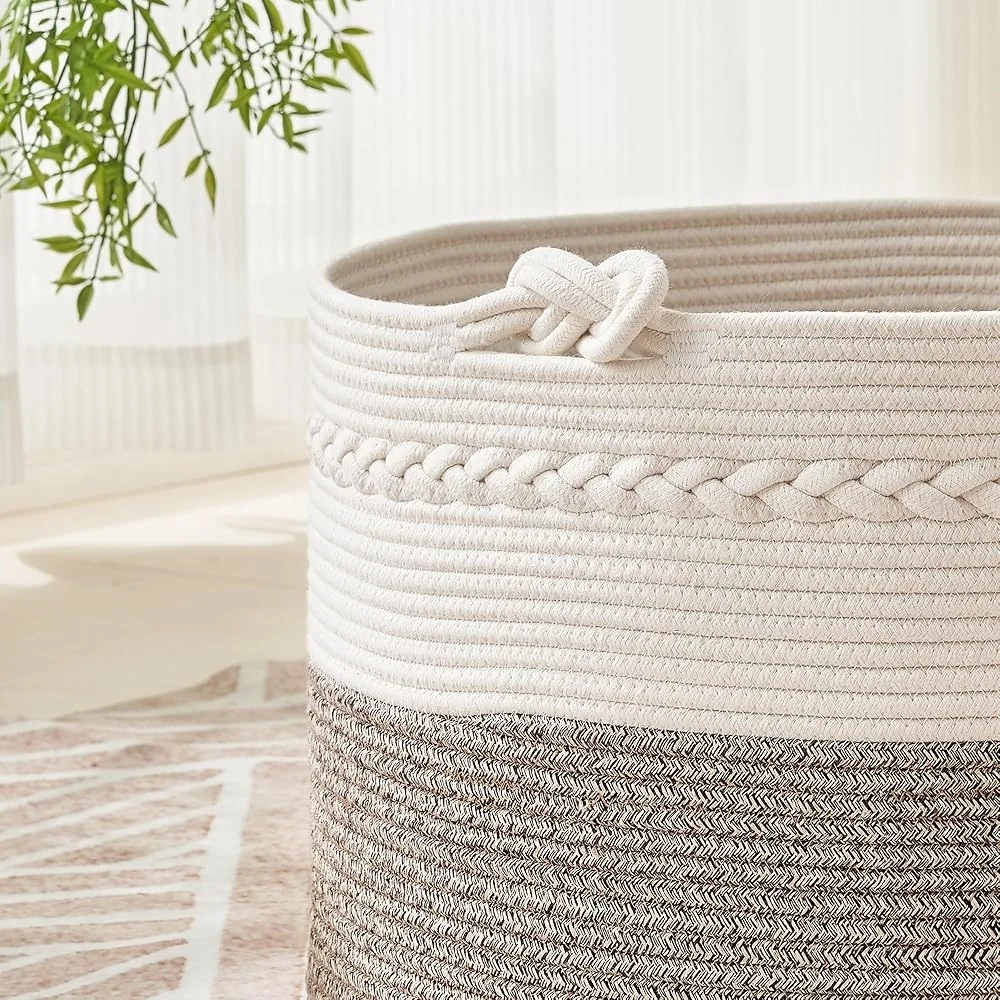
Durability and Longevity
When investing in a laundry basket, durability often tops the list of priorities. The materials and construction techniques determine how well your basket will withstand daily use over time.
Wicker Durability Factors:
* Natural wicker materials like rattan generally offer exceptional strength-to-weight ratios, with properly maintained rattan wicker baskets lasting 5-10 years or more
* Willow wicker tends to be slightly more brittle but still provides good durability when properly cared for
* Synthetic wicker options like resin or PE wicker significantly outperform natural materials in moisture resistance
* Weak points typically include handle attachments and rim areas that receive the most handling stress
* Prone to splintering or unraveling if damaged, which can be difficult to repair
Other Woven Materials Durability:
* Fabric-based wovens like cotton rope offer excellent flexibility but may sag over time with heavy loads
* Many modern woven baskets incorporate internal frames or reinforced bottoms to enhance structural integrity
* Canvas and heavy-duty fabric wovens often feature machine-washable construction, allowing for periodic refreshing
* Generally more forgiving when damaged, with easier repair options for tears or loose elements
* Typically offer shorter lifespans (3-5 years) than quality wicker, but with proper care can last longer
Environmental factors dramatically impact longevity for both types. High humidity can cause natural wicker to mold or mildew, while direct sunlight can fade and degrade synthetic wickers and fabric wovens alike. For families seeking long-lasting storage solutions, our woven laundry baskets collection includes options specifically engineered for maximum durability.
Breathability and Moisture Management
Proper airflow is a crucial yet often overlooked aspect of laundry basket design. Good ventilation prevents unpleasant odors, inhibits mildew growth, and can even help damp items dry faster—especially important for items tossed into the basket before they’re completely dry.
Wicker baskets excel in natural ventilation thanks to:
* Open weave patterns that create countless tiny air passages
* Natural spacing between weaving elements that promotes continuous airflow
* Elevated designs that often include slight gaps between the basket bottom and floor
* Materials that don’t readily absorb moisture (especially synthetic wicker varieties)
* Structure that maintains shape and doesn’t collapse against contents, preserving air channels
Other woven baskets vary significantly in breathability:
* Open-weave cotton rope baskets can provide excellent airflow
* Tightly woven fabric options may limit air circulation
* Canvas baskets often incorporate ventilation holes or mesh panels to improve breathability
* Some feature moisture-wicking liners that help manage dampness
For homes in humid environments or for those who frequently wash workout clothes or swimwear, ventilation becomes particularly important. Understanding the differences between natural versus synthetic wicker laundry options can help you select the material best suited for your specific moisture conditions.
Aesthetic Appeal and Home Décor Integration
Beyond practical considerations, laundry baskets contribute significantly to your home’s visual harmony. The right basket acts as both a functional tool and a stylish décor element that enhances your space.
Wicker baskets offer distinctive aesthetic advantages:
* Natural warmth and texture that softens even the most modern spaces
* Timeless appeal that complements traditional, coastal, farmhouse, and bohemian décor
* Subtle color variations in natural materials that add visual depth
* Elegant weaving patterns that create visual interest
* Ability to age gracefully, often developing an appealing patina over time
Other woven baskets bring different design elements:
* Clean lines and contemporary shapes that work well in modern or minimalist settings
* Greater color variety, from neutral tones to bold statement hues
* Textural diversity from smooth canvas to chunky rope weaves
* Often more adaptable to evolving décor trends
* Softer edges and flexible structures that create a casual, relaxed feeling
The right choice depends largely on your existing interior design scheme. Many homeowners find that laundry room wicker baskets create a sense of intentional design in what might otherwise be a purely utilitarian space. A thoughtfully selected basket transforms laundry storage from an eyesore into a design feature worth displaying.
Maintenance and Cleaning Requirements
Even the most beautiful laundry basket must withstand regular use, occasional spills, and the inevitable dust accumulation. Understanding maintenance requirements helps ensure your investment remains attractive and functional for years.
Wicker Cleaning and Care:
* Regular dusting with a soft brush or vacuum attachment prevents build-up in weave crevices
* Spot cleaning with a damp cloth works for most surface dirt
* Natural wicker requires prompt drying after any moisture exposure
* Occasional light oil treatment (like furniture oil) can maintain flexibility in natural wicker
* Basket liners protect against stains and make cleaning easier
* Should not be submerged in water or cleaned with harsh chemicals
Other Woven Baskets Maintenance:
* Many fabric-based options are machine washable (check individual care instructions)
* Canvas and cotton varieties can often be spot cleaned with mild detergent
* Some require periodic reshaping after cleaning
* Synthetic options may be wiped down with disinfecting wipes
* Often more forgiving with moisture exposure during cleaning
For busy households, maintenance requirements can be a deciding factor. Our selection of wicker laundry baskets includes options specifically designed for easy care, balancing beauty with practicality for today’s active lifestyles.
Practical Considerations for Daily Use
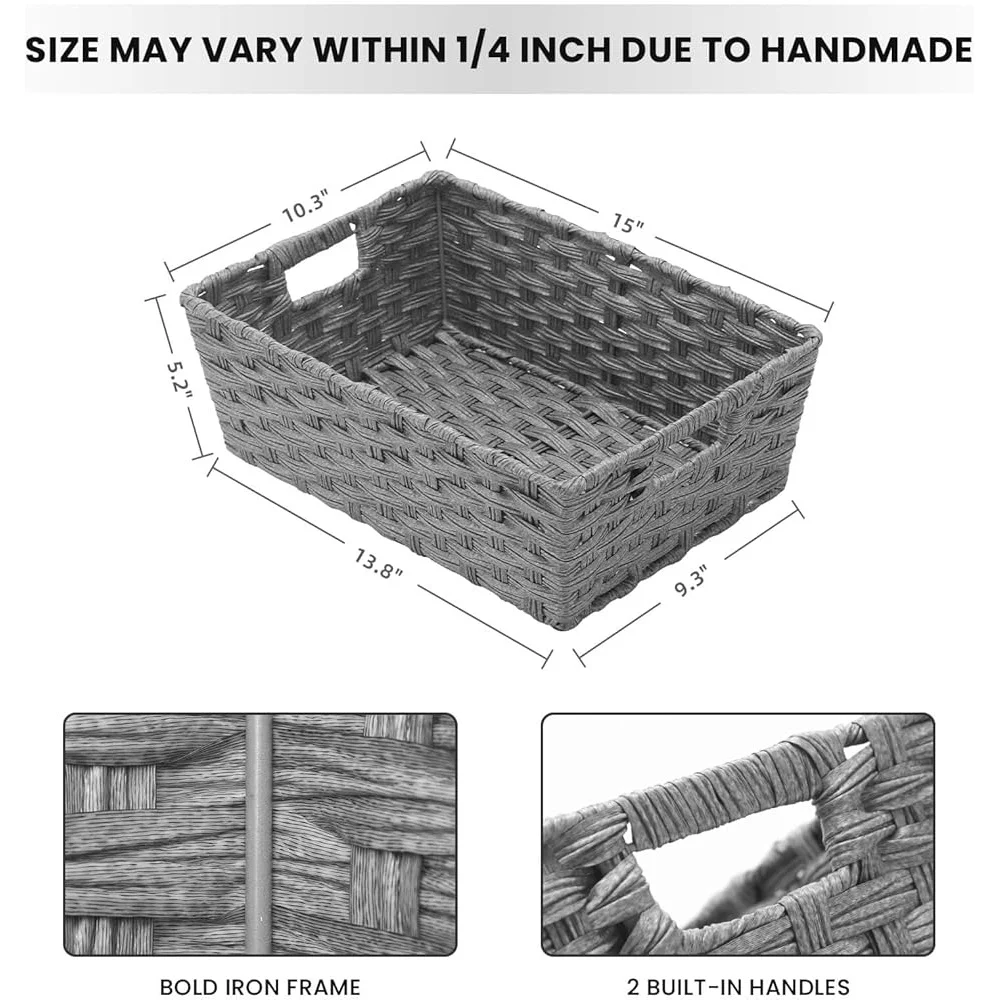
Weight and Portability Factors
The weight of your laundry basket—both empty and when filled—significantly impacts daily usability, especially in multi-story homes or for those with mobility considerations.
Wicker baskets typically:
* Weigh between 2-5 pounds when empty (depending on size and material)
* Provide sturdy structure that doesn’t collapse when carried
* Feature integrated handles that distribute weight evenly
* Maintain their shape even when filled to capacity
* May become quite heavy when made from denser natural materials like thick rattan
Other woven baskets generally:
* Weigh less (1-3 pounds empty) when made from fabric materials
* Offer more flexible carrying options, including shoulder straps in some designs
* May compress or fold for storage when not in use
* Sometimes feature softened handles that reduce hand strain
* Typically feel lighter even when full due to the basket material’s weight
For families who move laundry between floors or those with physical limitations, choosing the right handle design becomes particularly important. Our collection of wicker baskets with handles includes ergonomically designed options specifically engineered for comfortable carrying, even with heavier loads.
User-Friendliness for Different Household Needs
Different household compositions and laundry habits call for different basket features. Understanding how various designs function in real-world scenarios helps ensure satisfaction with your choice.
For large households:
* Rigid wicker provides structure for sorting multiple categories
* Deeper woven baskets accommodate bigger loads
* Stackable designs maximize vertical storage
For households with children:
* Smooth-finished wicker prevents snags on little fingers
* Lightweight fabric baskets allow children to help with chores
* Rounded corners on rigid baskets enhance safety
For small spaces:
* Collapsible fabric woven baskets conserve space when not in use
* Rectangular wicker designs maximize corner placement
* Dual-purpose designs serve as storage and décor
For aging adults or those with limitations:
* Lightweight materials reduce lifting strain
* Elevated designs minimize bending
* Smooth, wide handles improve grip security
The perfect basket adapts to your specific lifestyle needs. Understanding the differences between hampers versus baskets for small laundry spaces can help households with limited square footage maximize their options while maintaining functionality.
Investment Value: Comparing Costs and Benefits
Price Range Analysis
Laundry baskets represent varying investment levels, with price typically reflecting material quality, craftsmanship, design sophistication, and expected longevity.
Wicker laundry baskets generally:
* Start at moderate price points for basic designs
* Reach premium levels for handcrafted, natural material options
* Vary significantly based on material (synthetic typically costs less than quality natural rattan)
* Offer long-term value through extended durability (5-10+ years)
* Require minimal replacement, offsetting higher initial investment
Other woven laundry baskets typically:
* Start at lower price points, particularly for basic fabric options
* Reach mid-range for designer or artisanal rope/fabric baskets
* Often cost less upfront than comparable wicker options
* May require more frequent replacement (every 2-5 years)
* Sometimes offer replaceable parts (like liners) that extend useful life
When calculating long-term value, consider the cost-per-year rather than just the purchase price. A higher-quality basket that lasts 10 years may actually be more economical than replacing a cheaper option every few years. For more guidance on making a wise investment, our complete wicker laundry basket guide provides detailed information on evaluating quality indicators.
Environmental and Sustainability Factors
As environmental consciousness grows, the ecological impact of household items becomes an increasingly important consideration for many shoppers.
Natural wicker environmental considerations:
* Renewable plant materials (rattan, willow, bamboo) serve as carbon sinks during growth
* Traditional harvesting practices can be sustainable when properly managed
* Biodegradable at end of life, creating minimal landfill impact
* Often involves artisanal production supporting traditional crafts
* May involve shipping from distant production regions
Other woven baskets’ environmental profile:
* Natural fiber options (cotton, jute) offer similar sustainability benefits to wicker
* Fabric production may involve significant water usage and chemical processes
* Synthetic materials typically derive from petroleum products with associated environmental impacts
* Some modern options incorporate recycled materials
* Washable options reduce replacement frequency, lowering lifetime impact
For environmentally conscious consumers, natural materials from responsibly managed sources generally offer the most sustainable choice. This consideration adds another dimension to the value equation beyond just price and durability. Explore our laundry solutions collection to find options that align with your environmental values without sacrificing quality or aesthetics.
Making Your Decision: A Personalized Approach
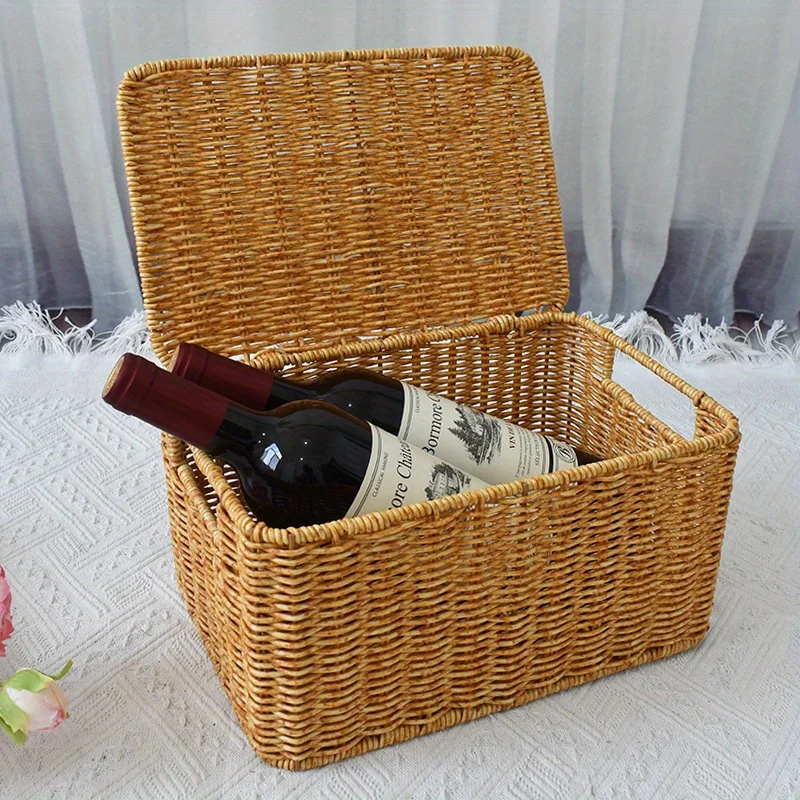
Decision Framework Based on Primary Use
Making the right choice depends on your specific circumstances and priorities. Consider these scenarios to determine which option might best suit your needs:
Choose wicker if:
* Aesthetics and home décor integration are top priorities
* You need exceptional durability for heavy loads
* You prefer natural materials with traditional craftsmanship
* Your space would benefit from the visual warmth and texture
* Airflow and ventilation for laundry are important concerns
* You’re willing to invest more upfront for longer-lasting quality
Choose other woven baskets if:
* Maximum lightweight portability is essential
* You frequently need to clean the basket itself
* Budget constraints favor a lower initial investment
* You prefer softer edges and more flexible structure
* You need baskets that can be collapsed when not in use
* Color coordination with specific décor is important
Consider secondary uses as well—many laundry baskets serve double-duty for toy storage, blanket organization, or even as decorative planters. Understanding which laundry basket styles align with your broader home organization needs ensures you’ll be satisfied with your choice for years to come.
Complementary Laundry Organization Solutions
Rather than viewing wicker and other woven baskets as competing options, many households benefit from incorporating both into a comprehensive laundry management system.
Effective combined approaches include:
* Using sturdy wicker baskets for primary laundry collection in bedrooms
* Employing lightweight woven baskets for transporting loads to and from the laundry area
* Creating sorting stations with different basket types for various laundry categories
* Utilizing decorative wicker for visible storage and utilitarian fabric baskets for behind-closed-doors organization
* Incorporating lidded wicker hampers for dirty laundry and open woven baskets for clean folded items
Wicker Laundry Baskets, Woven Laundry Baskets, Woven Storage Baskets
$392.02 Select options This product has multiple variants. The options may be chosen on the product pageWicker Baskets with Handles, Wicker Storage Baskets, Woven Storage Baskets
$137.92 Select options This product has multiple variants. The options may be chosen on the product pageLarge Wicker Laundry Baskets, Tall Wicker Baskets, Woven Laundry Hampers, Woven Storage Baskets
$130.54 Select options This product has multiple variants. The options may be chosen on the product pageWoven Laundry Baskets, Woven Laundry Washing Baskets
Price range: $136.76 through $581.37 Select options This product has multiple variants. The options may be chosen on the product pageWicker Hampers with Lids, Wicker Laundry Baskets with Lids, Wicker Laundry Hampers
$127.33 Select options This product has multiple variants. The options may be chosen on the product pageWicker Blanket Baskets, Woven Laundry Baskets
$89.60 Select options This product has multiple variants. The options may be chosen on the product page
The key to successful laundry organization lies in creating systems that work with your natural habits rather than against them. Understanding the various benefits of laundry baskets can help you design a comprehensive solution that streamlines this necessary household task while enhancing your home’s appearance.
Frequently Asked Questions About Laundry Baskets
Can wicker laundry baskets develop mold, and how can I prevent it?
Natural wicker can develop mold in consistently humid environments. Prevent this by ensuring good airflow around the basket, keeping it in well-ventilated areas, and occasionally setting it in sunlight to dry thoroughly. For bathrooms or damp areas, synthetic wicker offers better resistance to moisture issues.
How do I stop wicker baskets from snagging delicate fabrics?
Sand any rough spots smooth with fine sandpaper, then apply a small amount of furniture oil to the area. Consider using basket liners made of smooth fabric to create a protective barrier between delicate garments and the wicker surface.
Are fabric woven baskets strong enough for heavy loads?
Higher-quality fabric baskets with reinforced bottoms and sturdy stitching can handle moderate loads. Look for designs with internal frames or structural supports if you routinely carry heavy wet items like towels or jeans. Canvas and denim fabric baskets typically offer better load capacity than lighter cotton varieties.
Which option is better for humid bathroom environments?
Synthetic wicker or polyester fabric woven baskets perform best in high-humidity spaces. Natural materials like traditional wicker or cotton may develop odors or mildew unless exceptionally well-ventilated. If you prefer natural aesthetics, seagrass offers better moisture resistance than most other natural materials.
How can I repair a damaged wicker or woven basket?
For wicker, small breaks can be mended with wood glue and clothespins to hold pieces in place while drying. Learn about common disadvantages of wicker baskets and their solutions to extend your basket’s lifespan. For fabric baskets, basic sewing repairs or iron-on patches can address tears or worn areas.
Are synthetic wicker options comparable in quality to natural ones?
Modern synthetic wicker can closely mimic the appearance of natural materials while offering superior weather resistance and durability. High-quality synthetic options may actually outlast natural materials, particularly in challenging environments with moisture or temperature fluctuations. The best choice depends on whether you prioritize authenticity or practicality.
Expert Tips for Extending Your Laundry Basket’s Lifespan
Rotate usage between multiple baskets to prevent any single basket from wearing out prematurely, particularly at stress points like handles and rims.
Keep baskets elevated off damp floors, especially in bathrooms or laundry rooms where moisture can accumulate and damage natural materials over time.
Apply protective treatments appropriately—light furniture oil for natural wicker (annually) or fabric protector spray for cloth-based woven baskets (every few months).
Clean regularly rather than waiting until buildup becomes noticeable; dust and dirt particles can abrade fibers over time when embedded in creases and weaving.
Monitor humidity levels in storage areas; extremely dry environments can cause natural wicker to become brittle, while excessive humidity promotes mold growth.
Address damage immediately—small breaks or tears typically worsen rapidly with continued use, but prompt repairs can often restore full functionality and appearance.
Understanding the differences between wicker versus woven laundry baskets helps you not only make the right initial purchase but also maintain your investment properly for years of beautiful service. The perfect basket balances aesthetics with practicality, elevating an everyday household necessity into a thoughtful design element.

